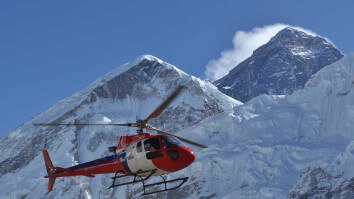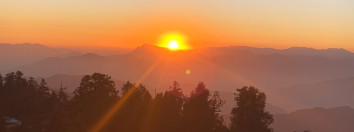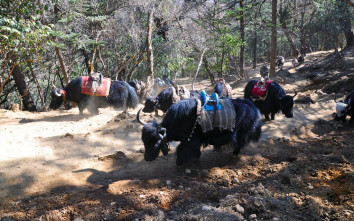Safety Tips for Trekking Experience in Nepal
29th Nov, 2024
- himalayaheart

Essential Safety Tips for a Secure and Enjoyable Trekking Experience in Nepal
Nepal, the land of towering peaks and serene valleys, is a dream destination for trekkers worldwide. From the iconic Everest Base Camp to the remote trails of Kanchenjunga, the country offers unparalleled trekking experiences. However, the majestic landscapes come with challenges, making safety a priority for every trekker. Here’s a comprehensive guide to help you trek safely in Nepal while enjoying its breathtaking beauty.
Table of Contents
1. Prepare Thoroughly Before Your Trek
Preparation is the key to a safe and enjoyable trek. Here’s what you should do:
- Research the Trek: Understand the trail’s difficulty, altitude, and weather conditions.
- Get Travel Insurance: Ensure your policy covers high-altitude trekking and helicopter evacuation.
- Physical Fitness: Train at least a month before your trek to build stamina and endurance.
- Pack Smartly: Include essentials like trekking boots, a down jacket, water purification tablets, and a first aid kit.
2. Hire a Licensed Guide or Porter
While Nepal offers several trails suitable for independent trekking, hiring a local guide or porter is highly recommended.
- Why Hire a Guide?
- Guides are familiar with the trails and ensure you don’t get lost.
- They provide cultural insights and manage permits and logistics.
- Porters: Help carry heavy loads, reducing the physical strain.
Pro Tip: Always hire guides and porters from reputable agencies to ensure professionalism and safety.
3. Be Altitude Aware
Altitude sickness is a common concern on Nepal’s trekking trails, especially those above 3,000 meters.
- Symptoms to Watch For: Headache, nausea, dizziness, and fatigue.
- Preventive Measures:
- Ascend slowly and follow the golden rule: Climb high, sleep low.
- Stay hydrated and avoid alcohol.
- Consider taking Diamox after consulting a doctor.
- Immediate Action: Descend to a lower altitude if symptoms persist.
4. Follow Weather Updates
Nepal’s weather can be unpredictable, especially in the mountains.
- Check the Forecast: Stay updated on weather conditions before starting your trek.
- Avoid the Monsoon Season: The trails can be slippery and prone to landslides during June-August.
- Best Seasons: Autumn (September-November) and spring (March-May) offer stable weather and clear views.
5. Stay on Marked Trails
Straying off marked trails can lead to accidents or getting lost.
- Follow your guide and avoid shortcuts.
- Look out for official trail markers, especially in remote areas.
6. Respect Local Customs and Wildlife
Nepal is rich in cultural and natural heritage. Be mindful of your actions.
- Cultural Etiquette: Greet locals with a polite “Namaste,” and respect their traditions.
- Wildlife Precautions: Do not feed or disturb animals. Maintain a safe distance from yaks and other livestock on the trail.
7. Carry Sufficient Cash and Essentials
Many trekking regions lack ATMs or card payment facilities.
- Bring enough cash for food, accommodations, and other expenses.
- Carry snacks, energy bars, and water purification tablets for remote areas.
8. Use Trekking Permits
All trekkers in Nepal need permits. Here’s what you’ll need:
- TIMS (Trekkers’ Information Management System) Card
- National Park or Conservation Area Permits
Make sure your permits are checked and validated before starting your trek.
9. Be Ready for Emergencies
Emergency preparedness is crucial in remote trekking regions.
- Emergency Contacts: Save the local rescue team and your embassy’s contact details.
- Helicopter Rescue: Ensure your insurance covers emergency evacuation.
- First Aid Kit: Carry essentials like bandages, painkillers, and altitude sickness medication.
10. Travel Responsibly
Nepal’s pristine trails are its treasure. Help preserve them for future generations.
- Follow Leave No Trace Principles: Carry back all your waste.
- Avoid Single-Use Plastics: Use refillable bottles and purification tablets.
- Support Local Businesses: Buy from local shops and stay at community-run teahouses.
FAQs
1. What is the best time to trek in Nepal?
Autumn (September-November) and spring (March-May) are ideal for trekking, offering stable weather and clear views.
2. Do I need travel insurance for trekking in Nepal?
Yes, it is essential, especially for high-altitude treks. Ensure your policy includes helicopter evacuation and medical emergencies.
3. Can I trek alone in Nepal?
Yes, but hiring a guide is recommended for safety, cultural insights, and navigating challenging trails.
4. How do I prevent altitude sickness?
Ascend gradually, stay hydrated, and avoid alcohol. Consider taking Diamox after consulting a doctor.
Conclusion
Trekking in Nepal is a once-in-a-lifetime experience, but safety should never be compromised. By preparing adequately, respecting the environment, and following these guidelines, you can ensure a safe and unforgettable adventure amidst Nepal’s stunning landscapes.
Recent From Blog


























